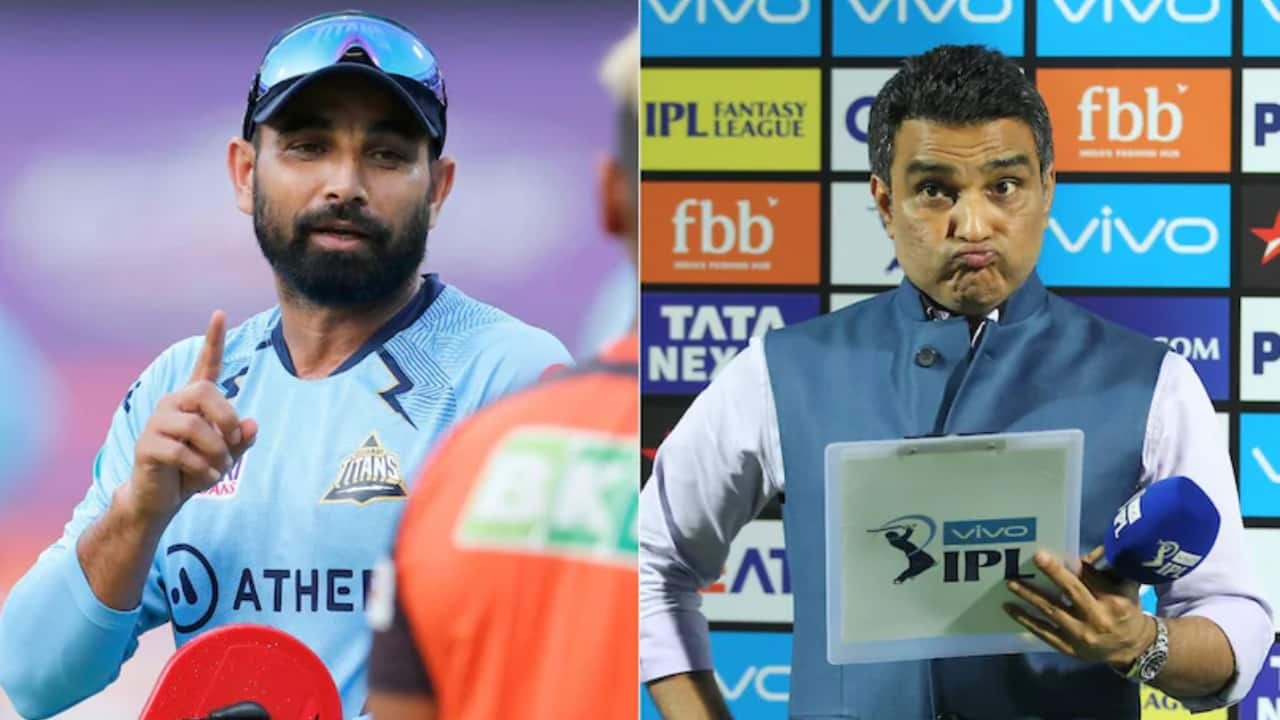 |
|
The recent spat between Indian cricketer Mohammed Shami and former cricketer Sanjay Manjrekar highlights the volatile nature of public opinion and the sometimes-tense relationship between players and commentators. Manjrekar, known for his insightful (though occasionally controversial) analysis, offered his perspective on Shami's potential performance and price in the upcoming IPL auction. He raised valid concerns about Shami's injury history, suggesting that this might lead to a lower bid from franchises wary of investing heavily in a player with potential injury setbacks. His comments, delivered on Star Sports, were seemingly well-intentioned and based on objective analysis of Shami's recent injury recovery and past performance. However, his words were met with a less-than-diplomatic response from Shami himself.
Shami's reaction, delivered via a sarcastic Instagram post featuring a screenshot of Manjrekar's commentary, was far from subdued. He employed a mocking tone, referring to Manjrekar as 'Baba Ji' and suggesting that the former cricketer should reserve some of his wisdom for his own future considerations. This sharp retort reflects a growing trend among athletes utilizing social media to directly respond to commentary and criticism. While some view this as a healthy means of engaging with fans and directly addressing misinformation, others see it as unprofessional or even counterproductive. The quick-paced nature of social media allows for immediate reactions, sometimes without the benefit of careful thought or consideration, as exemplified by Shami's fiery response.
The incident underscores the potential complexities of assessing player value in the high-stakes world of the IPL. While Manjrekar's analysis was rooted in observable facts—Shami's injury history is a legitimate concern for teams looking to invest significant resources—Shami's counter-argument implicitly suggests a disregard for these concerns. Perhaps Shami felt his current fitness level and performance were not adequately reflected in Manjrekar's assessment. This tension between objective analysis and subjective player perception is a recurring theme in professional sports, where the value of a player is not merely determined by statistics but also by intangible factors like confidence, mental fortitude, and the perception of future potential. The incident also highlights a broader narrative surrounding the role of social media in professional sports. While it provides a platform for athletes to engage directly with their audience and address rumors or misinformation, it also carries risks of escalating minor disagreements into public controversies.
Shami’s past social media activity shows a pattern of actively engaging with, and often directly confronting, media reports and public commentary that he perceives as inaccurate or unfair. This proactive approach, while demonstrating his commitment to managing his public image, could also be perceived as overly sensitive or confrontational. It raises questions about the lines between reasonable self-defense and unnecessarily inflammatory responses. Manjrekar's comments, while based on observable data, may have lacked the necessary nuance to convey the full picture of Shami's abilities and potential. This emphasizes the need for commentators to be not only analytical but also empathetic, understanding the potential impact of their words on players' careers and public perceptions. The incident serves as a reminder of the ever-evolving dynamic between athletes, commentators, and the increasingly influential role of social media in shaping public opinion.
The impact of this exchange extends beyond the immediate participants. It provides a case study in the interplay between public perception, media representation, and athlete self-promotion in the competitive landscape of professional cricket. The IPL, with its massive viewership and substantial financial stakes, creates a high-pressure environment where even seemingly minor disagreements can escalate quickly. The Shami-Manjrekar incident demonstrates the need for more careful consideration and perhaps greater sensitivity when commenting on players' health, performance, and market value in the public sphere. The incident leaves us questioning the most effective ways for athletes to manage their public image and engage with critics, whilst maintaining professionalism and avoiding unnecessarily contentious public discourse.
Ultimately, the Shami-Manjrekar exchange serves as a cautionary tale for all involved in professional sports. It highlights the need for balanced commentary, thoughtful engagement, and a greater awareness of the far-reaching effects of public statements in the age of social media. For players, it points to the need for strategic engagement, while for commentators, it underscores the importance of comprehensive, nuanced reporting. While direct athlete engagement with public perception is understandable, the need for a measured and considered approach is crucial, minimizing the potential for unnecessary conflict and promoting a healthier relationship between athletes and those who comment on their performance.
Source: Mohammed Shami blasts at Sanjay Manjrekar over IPL auction predictions, reacts 'Baba Ki Jay Hooooo'
